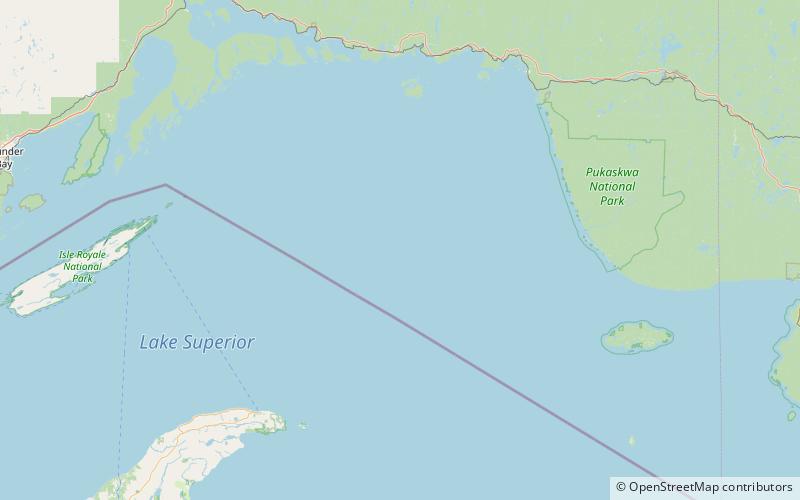Superior Shoal, Lake Superior National Marine Conservation Area

Facts and practical information
The Superior Shoal is a geologic shoal of approximately 20 square miles located 50 miles north of Copper Harbor, Michigan in the middle of Lake Superior, the highest point of which lies only 21 feet below the lake's surface. The shoal is a hump of Keweenawan basaltic lava flows with ophitic interiors and amygdaloidal tops in an otherwise deep part of the lake, and though fishermen had known of its existence for generations it was only officially charted in 1929 by the United States Lake Survey. It has been theorized that the World War I French minesweepers Inkerman and Cerisoles, which disappeared during their maiden voyage on Lake Superior in mid-November 1918, may have run aground on this shoal and some have theorized that it may have been to blame for both the disappearance of the "Flying Dutchman of the Great Lakes" on November 21, 1902 and the sinking of the "Titanic of the Great Lakes" on November 10, 1975. It is one of the known off-shore spawning and foraging habitats for the juvenile lean lake trout. ()
Lake Superior National Marine Conservation Area